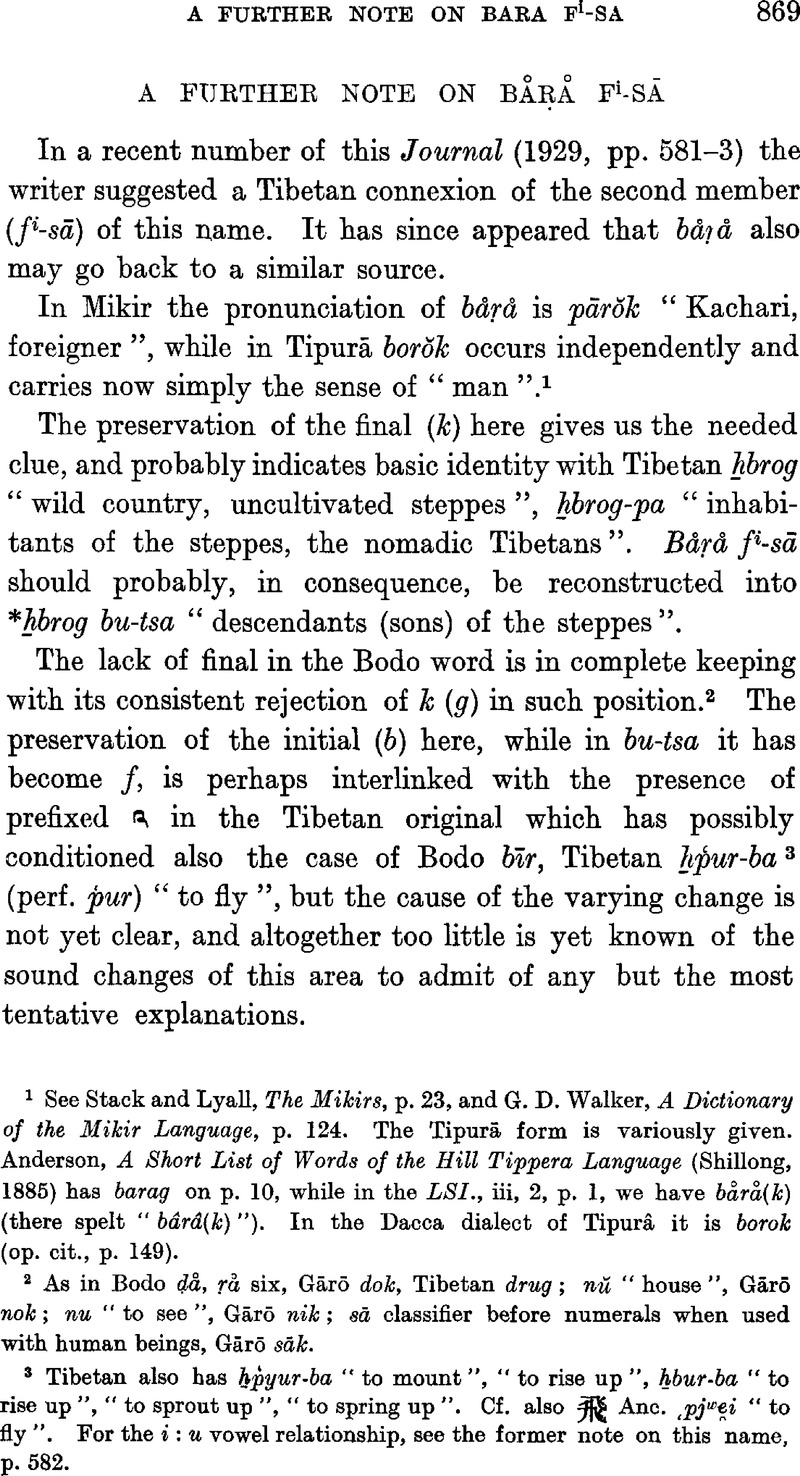No CrossRef data available.
Published online by Cambridge University Press: 15 March 2011

1 See Stack, and Lyall, , The Mikirs, p. 23Google Scholar, and Walker, G. D., A Dictionary of the Mikir Language, p. 124Google Scholar. The Tipurā form is variously given. Anderson, , A Short List of Words of the Hill Tippera Language (Shillong, 1885) has barag on p. 10Google Scholar, while in the LSI., iii, 2, p. 1, we have bårå (k) (there spelt “bârâ(k)”). In the Dacca dialect of Tipurâ it is borok (op. cit., p. 149).
2 As in Bodo ḍå, ŗå six, Gārō dok, Tibetan drug; nŭ “house”, Gārō nok; nu “to see”, Gārō nik; sā classifier before numerals when used with human beings, Gārō sāk.
3 Tibetan also has hpyur-ba “to mount”, “to rise up”, hbur-ba “to rise up”, “to sprout up”, “to spring up”. Cf. also ![]() Anc. pjwḛi “to fly”. For the i: u vowel relationship, see the former note on this name, p. 582.
Anc. pjwḛi “to fly”. For the i: u vowel relationship, see the former note on this name, p. 582.